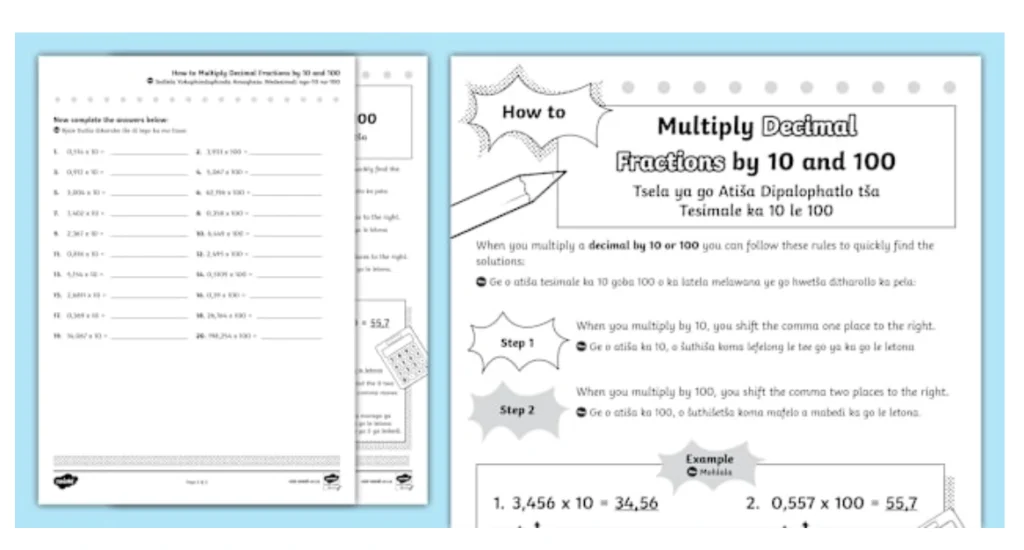As learners transition through the Intermediate and Senior Phases of schooling, one of the most significant challenges they face is the language of learning and teaching, especially in subjects like Science, Technology and Mathematics (STEM). For many South African learners, the shift from learning in their home language in the Foundation Phase to English in Grade 4, or continuing in a language that is not their mother tongue in Grade 7, can create substantial barriers to understanding and academic success.
To address this, the Department of Basic Education has been placing renewed focus on the Mother Tongue-Based Bilingual Education approach, recognising that language should be a bridge, not a barrier, to learning.
Why Mother Tongue Education Matters
Children learn best when they understand the language in which they are taught. Research consistently shows that when learners develop strong foundational knowledge in their mother tongue, they are more likely to grasp complex concepts across all subjects, including STEM. Understanding key terminology and instructions in a familiar language boosts confidence, improves classroom participation, and enhances critical thinking.
In subjects like Natural Sciences and Mathematics, where precise understanding is key, unfamiliar vocabulary in English can be an obstacle. This is particularly true for Grade 4 learners, who are adapting to more abstract content and new academic expectations, and for Grade 7 learners preparing for high school.
The Role of Dual Language Resources
To support learners in navigating this transition, Twinkl South Africa has created a range of dual language resources designed specifically for STEM subjects. These high-quality materials present content in both English and one of five African languages: isiZulu, isiXhosa, Sepedi, Sesotho, or Setswana.
These resources offer a flexible and accessible solution for:
- Bridging language gaps in the classroom
- Supporting learners who need additional help at home
- Empowering parents and caregivers who want to be involved in their child’s education but may not feel confident using English
By seeing STEM concepts explained in both English and their mother tongue, learners are better able to build academic vocabulary, make connections, and understand instructions and terminology. Parents can also use these resources to reinforce learning at home, even if they are not fluent in English themselves.

How Parents Can Use These Resources
Whether your child is in Grade 4 and adjusting to a new learning language, or in Grade 7 and needing support to catch up, here are a few ways you can use Twinkl’s dual language STEM resources at home:
- Review key vocabulary in both languages before tests or new topics.
- Discuss science concepts using the explanations provided in your home language.
- Work together on worksheets, using the familiar language to guide your child through tricky questions.
- Encourage your child to switch between languages—this builds confidence in both English and their mother tongue.
Twinkl’s resources are printable, easy to use on mobile devices, and available through free trials and subscriptions. Simply visit www.twinkl.co.za and search for “dual language STEM” to find materials matched to the South African CAPS curriculum.
Empowering Success Through Language
Every child deserves the opportunity to succeed—and language should never stand in the way. By using the power of mother tongue education and accessible dual language resources, we can help learners understand better, achieve more, and build a stronger foundation for their future in STEM and beyond.
The company provides high quality, online learning materials and services, which are all teacher-created and checked.
Twinkl offers over 1 million resources, with new content added daily. This ranges from schemes of work and assessments to augmented reality games and much more.
Twinkl is used and trusted by schools and educators in over 200 countries and regions, including primary and secondary school teachers, nursery workers and parents.
Twinkl has over 1400 team members based in its two Sheffield offices and remotely around the globe, including a large team in South Africa.
More information can be found at twinkl.co.za
Our story:
The idea for Twinkl came to Jonathan and Susie Seaton when Susie was working as an Early Years teacher and couldn’t find the materials she needed for her lessons online. As a result, Susie was working evenings and weekends to make resources from scratch.
Speaking to colleagues and friends, the couple found that Susie was not alone in her situation. So, to help other teachers, they began creating and publishing educational resources online from their spare bedroom.
The business grew quickly and organically as educators embraced the high-quality materials. The team grew quickly too, with current and former teachers, as well as experts in content and design soon joining Jonathan and Susie in their mission 'to help those who teach.'
Jonathan and Susie are delighted that Twinkl is now taking this mission across the world, returning time and energy to educators that is better spent in the classroom with their pupils or on themselves at home.





